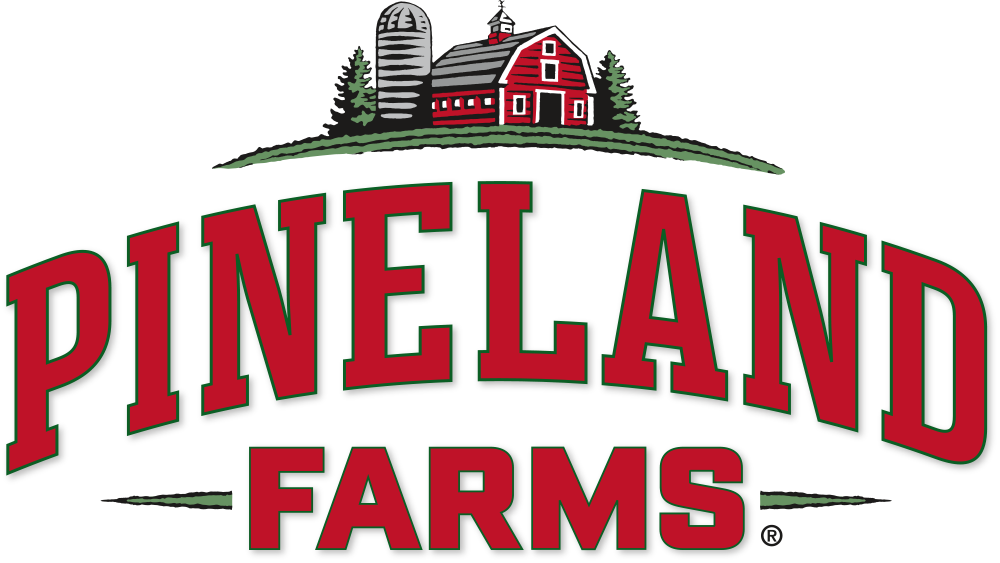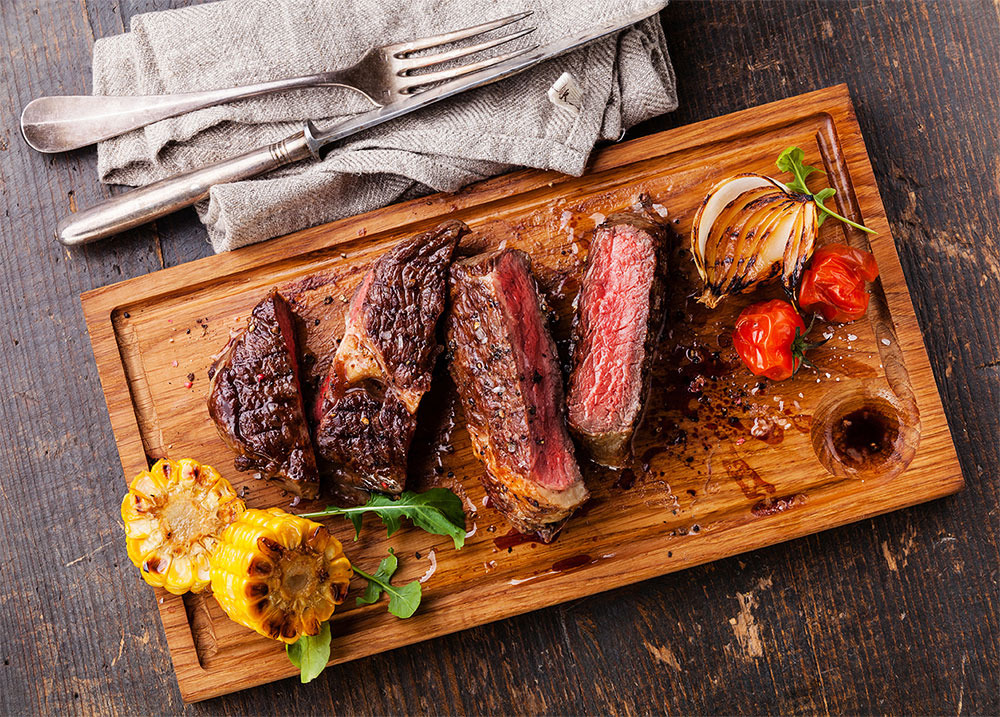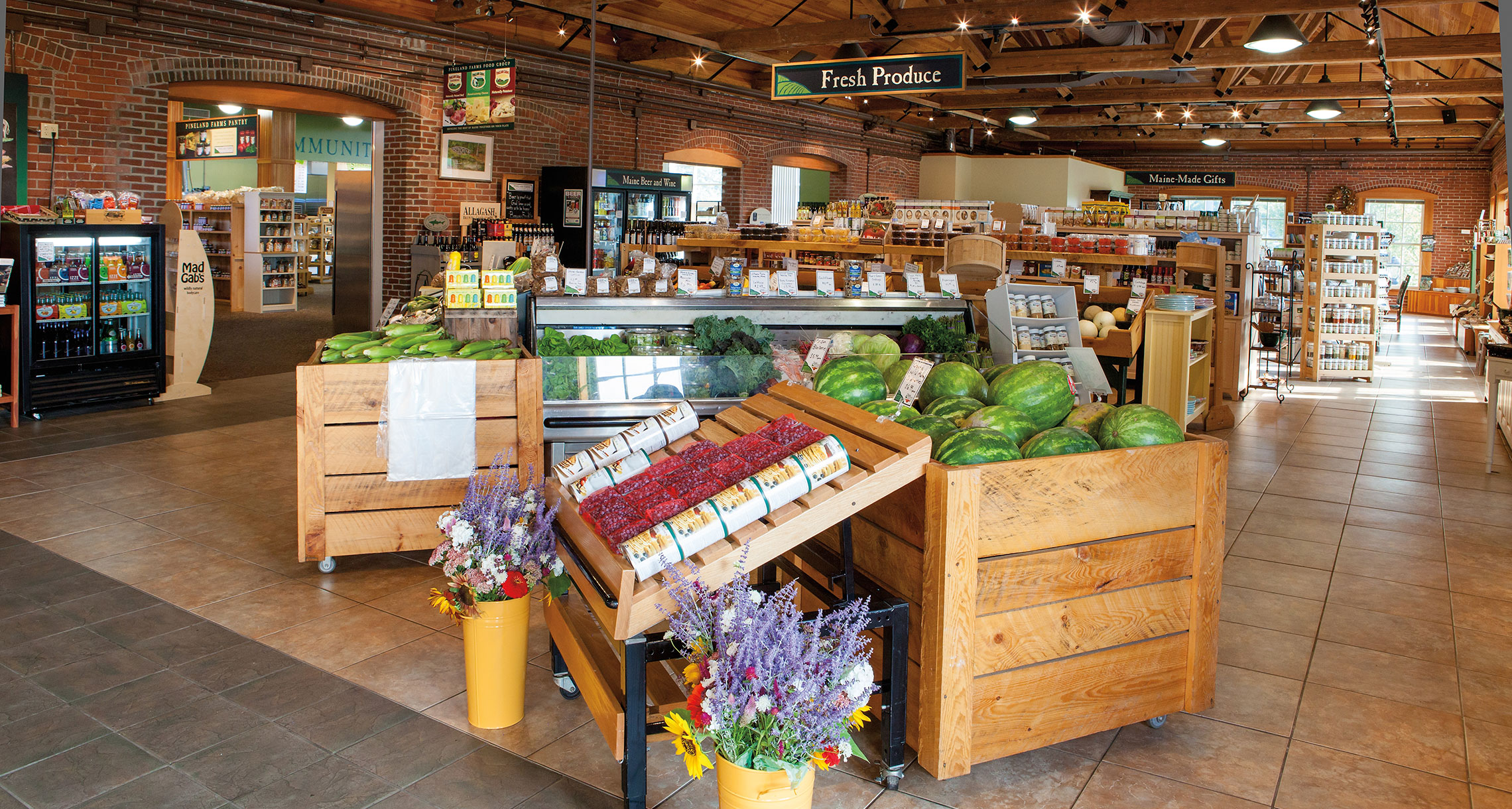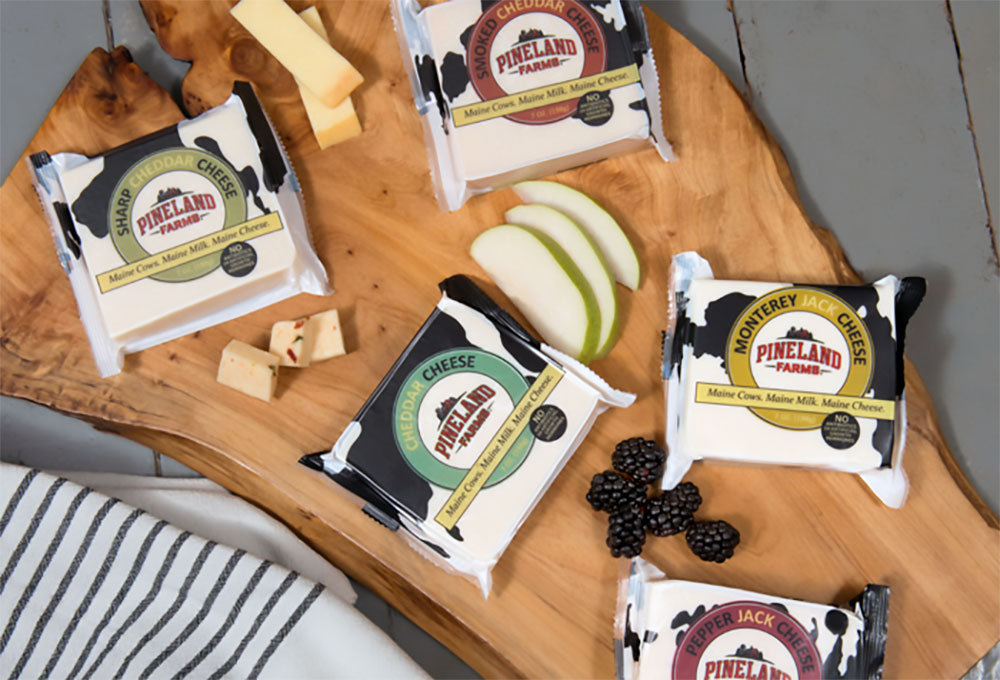The Sex-Link Layers at Pineland Farms
We love chickens at Pineland Farms. We introduce 175 new chicks, shipped at only a few days old through the mail (in a few loudly cheeping boxes), to our production flock every year. They spend the first 6-8 weeks of their lives close to their heat plates, before being let out to roam
their coop and outside pasture. They start laying eggs at around 5 months old – and reach full production only a month after that. Chickens come in all kinds of shapes, sizes and colors – which you can see in the diverse, smaller flock you can find roaming our farmyard. However, peeking into our production coop you might notice less diversity. That is because all our production hens are sex-linked!
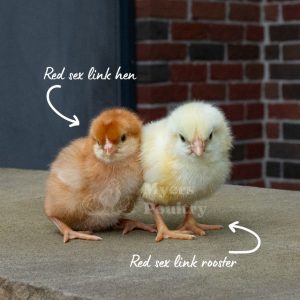
What is a Sex-Link Chicken?
The name comes from a unique trait. Males and females are born differently colored, meaning they are easily identifiable from the moment they hatch. All chickens have two rows of wing feathers, and typically chicks are gendered by their lengths. If the bottom row is longer, the
baby chick is assumed to be a female. If the top row is longer, or both rows are the same length, the baby chick is most likely a male. This method is tricky however, and not always accurate. If a skilled person is doing the sexing, accuracy still only ranges between 80-90%! This is why sexlinked breeds are a go-to choice for those who need accurate sexing. In a small flock, it usually isn’t an issue if a chick or two comes inaccurately sexed because you’re only raising a few at a time. An accidental rooster here and there is just the risk you take if you want more unique breeds in your flock. However, when you are getting 175 chickens all at once for egg production – that rooster risk can become an issue! Not only do sex-linked breeds significantly lower thoseodds, but they have been bred to be wonderful egg layers and a hardy breed to care for. Sex-link chickens aren’t a breed, but rather the name given to a hybrid created by breeding two purebred chickens with desirable traits. In the case of sex-link chickens, breeders will cross two purebred chickens with high egg production to create a chicken that will inherit those strong egg-laying genetics.
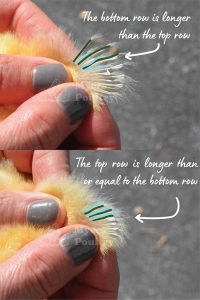
The Breeds that Make Up Sex-Links
Our production flock at Pineland Farms is made up of 3 sex-link breeds: Amberlinks, Red Sex Links, and Black Sex Links. Each chicken lays one egg every 26 hours, which adds up to between 280-300 per year! On an average day, our farm educators may collect up to 160-320 eggs, which we hand-wash and process to keep our market stocked with farm fresh eggs. Different hatcheries use different breeds of chickens when hybridizing, but in our case, all our hybrids have Rhode Island Red roosters in their parent stock. Rhode Island Reds are one not only of the most beloved chicken breeds, but also one of the best egg producers on the market – making them a natural choice for sex-link breeding! Our Black Sex Link chickens are a cross between a Rhode Island Red rooster and a Barred Rock hen. Because they are a cross, their appearance can vary from bird to bird, but generally a Black Sex Link hen has black plumage with some gold, reddish feathers on their head and neck. Their dark plumage makes them great for backyard flocks or free-range setups, as birds of prey may mistake them for a crow! Red Sex Link hens have several other names or terms used to describe them, because hatcheries may be using several different breeds to make their own unique hybrids. Common ones are Isa Brown, Golden Comet, Cinnamon Queen, or Golden Buff. Our Red Sex Link hens are a cross between a Rhode Island Red and a White Leghorn. They have reddish brown feathers with some white highlights throughout Our Amberlink hens are a cross between a Rhode Island Red rooster and a White Plymouth Rock hen. Amberlink chickens are usually a creamy white color with flecks of red on their wings and tail feathers. The main difference between each breed is their coloration, as well as the different breeds used to make them. However, their egg production is nearly identical – and all sex-links are known for their hardiness and versatility. Whether you’re running a farm or a backyard homestead, these breeds are suitable for a variety of setups. Even better, these friendly chickens are suitable for complete beginners – so if you’re looking to start a flock of your own, sex-links are a great option!
FAQ About Sex-Link Breeds
Do all of these chickens lay the same color eggs? Yes, all of these sex-linked breeds produce large to extra-large brown eggs. However, the exact shade of brown the hens lay is determined by genetics and varies on an individual basis. Color may range from a light tan to a rich brown.
Why are sex-links so good at laying eggs? It’s due to a phenomenon called heterosis, otherwise referred to as “hybrid vigor.” When breeding two living things together that share strong genes for a trait, you generally see an increase of those desired characteristics in the hybrid. However this only applies to the first generation of offspring, so two sex-links (which are hybrids and not first generation) bred together will not produce the same results.
Are sex-link breeds suitable as pastured poultry?
Yes, they are highly adaptable, cold-hardy, and they thrive in environments where they can express their natural behaviors. Our production flock has a spacious coop, as well as an outside pasture where they can enjoy scratching for bugs and roaming around freely. We do recommend having a few predator proofing methods in place should you choose to allow your chickens to free-range.
Meet the Animals at Pineland Farms
Aside from our production flock, Pineland Farms has several types of livestock onsite to educate
and delight our guests. When you purchase a 2-hour farm pass, you’ll have the opportunity to
take a self-guided tour and meet several goats, sheep, peafowl, ponies, barn cats and bunnies.
Our smaller decorative flock also roams the farmyard, where you can see different breeds of
chickens as well as our rooster Garbanzo!
Want to learn more about our Farmyard Friends and meet them up close? From June to August, we offer educator led programs with hands-on activities where you can ask questions and learn about different farming methods. You can visit the animals year-round with a 2-hour farm pass, as well as participating in our educator-hosted seasonal family activities. All activities can be explored and booked through our website, and we look forward to meeting you and showing you around the farm!
